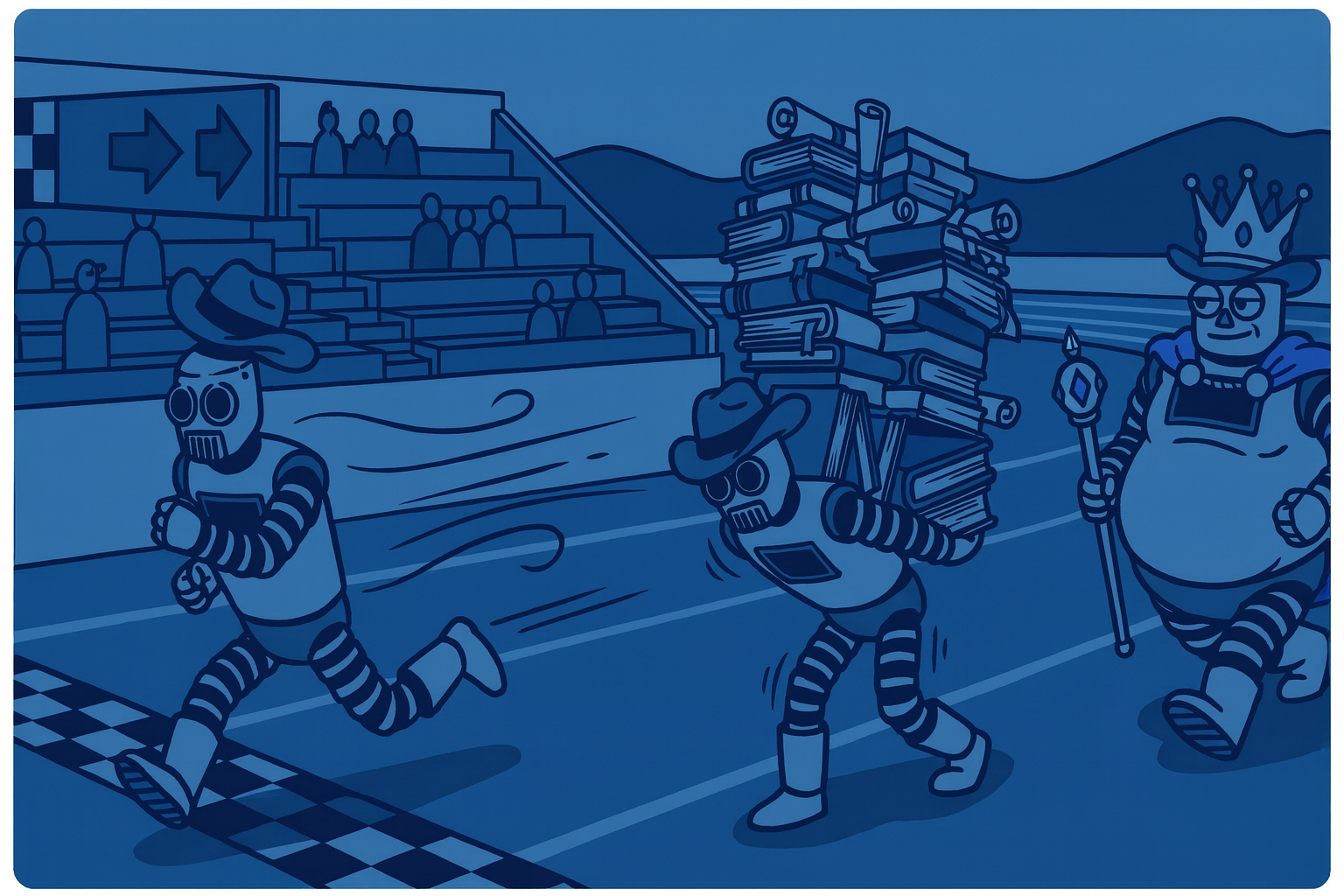The Difference in OpenAI models: o1 Preview vs o1

It’s been half a year since OpenAI announced its groundbreaking o1 series, featuring the o1 preview and o1 mini models. These models were a large leap forward in specialized reasoning and problem-solving, each designed with a specific set of use cases in mind.
In December, OpenAI released the full o1 model, the successor to o1-preview. Both models are designed for complex reasoning tasks, but they have key differences in terms of capabilities and performance.
Below we compare the o1 and o1-preview models so you can understand how they differ.
Overview of O1 and O1-preview
The o1 series are trained to perform complex reasoning, setting them apart from earlier LLMs that primarily relied on pattern recognition and statistical associations.
A key characteristic of the o1 series is their ability to "think" before they answer. This involves generating a series of internal steps, called "reasoning tokens," to break down their understanding of the prompt and consider multiple approaches before arriving at a response.
After generating the reasoning tokens, the model produces an answer as visible completion tokens and discards the reasoning tokens from its context. This deliberate, step-by-step approach allows them to tackle intricate problems and achieve higher accuracy in tasks that demand logical deduction and problem-solving.
PromptLayer lets you compare models side-by-side in an interactive view, making it easy to identify the best model for specific tasks.
You can also manage and monitor prompts with your whole team. Get started here.
What's the difference between an LLM that thinks and one that does not?
To better understand this "thinking" process, consider the analogy of System 1 and System 2 thinking.
System 1 thinking is fast and automatic, like knowing that 3 + 4 = 7 without having to calculate it.
System 2 thinking, on the other hand, is slower and more deliberate, like solving a complex math problem step-by-step.
Previous LLMs largely operated like System 1, providing quick answers but struggling with increased complexity. O1, however, is more like System 2, breaking down complex problems into smaller, manageable steps to arrive at a solution.
This approach can help mitigate one of the biggest weaknesses of LLMs: hallucinations, or generating incorrect or misleading information.
What is OpenAI's o1-preview model?
O1-preview was the first model in the O1 series, released as a preview to gather feedback and refine the technology. It was enabled within ChatGPT for plus users and available to developers in the API. O1-preview demonstrated strong reasoning capabilities and broad world knowledge, excelling in tasks such as:
- Scientific reasoning: O1-preview excels in STEM fields, paving the way for more intelligent and autonomous AI systems in areas like medicine, engineering, and scientific research.
- Mathematical problem-solving: Performing at a level comparable to the top 500 U.S. high school students in the International Mathematical Olympiad.
- Coding: Demonstrating proficiency in generating and debugging code, performing well in coding benchmarks like HumanEval and Codeforces.
O1-preview had a context window of 128,000 tokens, allowing it to process and retain a large amount of information.
However, it was also noted for its high cost per token and the tendency to generate lengthy outputs due to its extensive "thinking" process.
What is OpenAI's o1 model?
O1 is the successor to o1-preview, incorporating improvements based on feedback and further research. While specific details about the improvements are limited, some key enhancements include:
- Improved accuracy with fewer reasoning tokens: o1 reportedly achieves better accuracy while using fewer reasoning tokens compared to o1-preview, suggesting increased efficiency and potentially faster response times.
- Vision API integration: Unlike o1-preview, o1 can process and understand images through the Vision API, expanding its capabilities to visual domains.
- Function calling: o1 supports function calling, enabling it to generate syntactically valid JSON objects in the API, which is crucial for interacting with external systems and APIs.
- Context Window: o1 offers a context window of 200,000 tokens, a significant increase from o1-preview's 128,000 tokens. This allows o1 to handle even larger and more complex inputs.
Some users have observed that O1 might be less powerful than O1-preview in certain aspects, potentially due to reduced compute time allocated for its "thinking" process. This suggests a trade-off between speed and accuracy, where O1 might prioritize faster responses over more in-depth reasoning in some cases.
For example, in coding tasks, O1-preview achieved a 90% success rate in generating error-free code, while O1 had a 60% success rate. This difference in performance could be attributed to the reduced compute time in O1.
Key Differences between o1 vs o1-preview
| Feature | O1-preview | O1 |
|---|---|---|
| Reasoning Ability | Strong, with extensive reasoning chains | Improved accuracy with fewer reasoning tokens, potentially faster |
| Vision API | Not supported | Supported |
| Function Calling | Not supported | Supported |
| Compute Time | Potentially higher, leading to more in-depth reasoning | Potentially lower, prioritizing faster responses |
| Context Window | 128,000 tokens | 200,000 tokens |
| Cost | Higher cost per token | Not specified, but potentially lower due to efficiency improvements |
| Output Length | Longer outputs due to extensive reasoning | Potentially shorter outputs due to optimized reasoning |
| Accuracy | High accuracy on complex tasks, potentially higher in some cases | Improved accuracy with fewer reasoning tokens |
| Availability | Limited availability as a preview release | Gradually expanding availability |
Final thoughts
While o1-preview excelled in complex problem-solving across various domains, o1 builds upon this foundation with improved efficiency, vision API integration, and function calling. This reflects a broader trend in AI development towards more sophisticated reasoning and problem-solving abilities.
The o1 series marks an exciting step towards more intelligent and capable AI systems. As these models continue to evolve, we can expect even more interesting applications and advancements and you can take part in all of it.
About PromptLayer
PromptLayer is a prompt management system that helps you iterate on prompts faster — further speeding up the development cycle! Use their prompt CMS to update a prompt, run evaluations, and deploy it to production in minutes. Check them out here. 🍰



